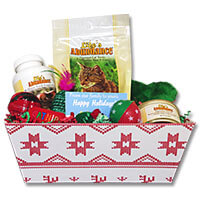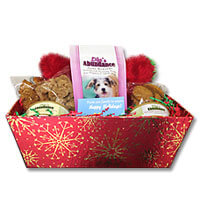To get the most out of your visit with your veterinarian, ask questions. The answers and advice you receive will help you to provide the best possible care for your pet. Here is a list of questions to consider:
1. How much does he weigh? Find out what your
puppy weights and make note of it. Keep track of the weight and notice any study change.
2. What is his body condition score? What this really means is... if he is too fat or too thin. The body condition score looks at the amount of fat on a dog's frame relative to his overall size. If he is too fat, ask your vet what you can do to help him loose weight. They may recommend that you cut back on his portions or table scraps, change his diet, or increase his activity by going on more walks. If he is too thin, ask for recommendations to address this issue.
3. What should he be eating? Ask your veterinarian their opinion on the best food to feed your pet. Most vets recommend a good quality premium pet food that offers good quality control and has AAFCO approval formulated to meet the needs of your dogs life stage. For example, if you have a puppy, a common recommendation would be AAFCO approved food to meet the growing demands of puppies. Additionally, it can be further segmented into growing large or small breed dogs. Depending on your dogs' sex, age, weight and overall health, your veterinarian may recommend a formula for less active dogs or a prescription formula that may be beneficial in the presence of an underlying medical condition.
4. Was his physical examination normal? This may be the most important part of your pets visit to the veterinarian. The examination can help to identify problems early when conditions may be more treatable. Ask if his heart and lungs sounded normal, if his abdomen felt normal on examination and if he overall appears healthy. If not, what is wrong? What can be done?
5. How do his teeth and nails look? Should you be brushing his teeth? Trimming his nails? If so, will they show you how if you don't already know?
6. Is he getting the vaccines he needs? Make sure your pet is getting what needs but not more than what he needs. Depending on where your dog lives, his age, and his lifestyle, vaccine recommendations may vary. There are some vaccinations he may not need or he may be at risk for Lyme disease and some other diseases that may be prevented with a vaccine. If your pet boards at a kennel, additional vaccines may be recommended. Rabies is required by law.
7. Does he need heartworm prevention? Dogs that live in warm climates are at risk for heartworm disease. This can be prevented by a monthly medication. Find out what he should take and when he should take it. Some vets recommend a seasonal approach and others a year around medication.
8. Does he need tick prevention medication? Depending on where your dog lives and his level of risk, he may benefit from tick control medications. Ticks can carry diseases that can cause severe illness.
9. Does he have worms or need a dewormer? A fecal examination can help determine if your pet has gastrointestinal worms. Some pets may be routinely dewormed. Some of the heartworm preventative medications also treat gastrointestinal parasites.
10. Should he have any "routine testing"? Are there any routine tests that should be done to monitor his health for his age? Dogs age differently depending on their breed, size and weight. Some large breed dogs, such as Great Danes, are considered "senior" at 6 or 7 years. Some smaller breed dogs, such as Dachshunds, are not considered senior until 8 or 9 years of age. Many veterinarians recommend routine blood work to assess your pet's organ function on a periodic basis.
11. How do you handle emergencies? It is always easiest to ask this when you don't have an emergency. Find out what number to call if they handle their own emergencies and if not, find out the number and location for their emergency clinic of choice. Hopefully you won't need it, but if you do, you will be glad you have it.
12. What is the best way to communicate? Do they accept and answer emails? Can you renew prescriptions or order food in this manner? If so, which address should you use? Or is all their business handled over the phone?
13. How about microchips? Should your pet have a microchip and if he already has one, can they test it to make sure it is working properly? Microchips are small devices implanted under a dog's skin that helps to identify them if they are lost. Make sure you document the number and the microchip company and number. Ask if the chip is registered to their practice or to you. It is far better to have it registered directly to you.
14. Is there anything you can do to make your pet more comfortable? This applies most often to senior pets. Does your veterinarian think your pet is in pain? If so, is there something they recommend? There are many new arthritis medications that work well in dogs. Some additional comfort measures may include a special bed for arthritic pets or a ramp to aid arthritic pets to get in and out of the car.
15. Is your pet at risk? Is your pet at risk for anything that you can prevent or any disease that you should know about? For example, unsprayed dogs are at risk for life-threatening uterine infections that can be prevented by spaying. Some
dog breeds are at risk for arthritis and certain types of cancer. Ask what problems your pet might be at risk for and symptoms you should watch for.
Tips on Getting the Most Out of Your VisitTo get the most out of your vet visits, make sure you have information about your pet to help the vet better understand your pet and your dogs problems. If you are visiting your veterinarian for any type of ailment, make sure you know details about the ailment. Your veterinarian will want to know when the problem started, how often it is a problem, and if there are associated symptoms. For example, if your pet is vomiting, they will want to know when it started, how frequent it occurs, if there is blood or other abnormalities, and associated symptoms such as if there diarrhea, if your pet is not eating, or if your pet is acting lethargic?
Finally, make sure you are honest. Don't underestimate what table scraps you feed or anything else about how you care for your pet. If you missed a dose of medication, don't be embarrassed, just tell them the facts. Your veterinarian is there to help you to provide the best care for your pet and they can only do that if they know the facts.




















 Through investigation and interviewing the ill people, the DHHS Bureau of Infectious Disease Control determined that the jerky treats were implicated in spreading Salmonella. Confirmation through laboratory testing of the jerky is pending at the New Hampshire Public Health Labs.
Through investigation and interviewing the ill people, the DHHS Bureau of Infectious Disease Control determined that the jerky treats were implicated in spreading Salmonella. Confirmation through laboratory testing of the jerky is pending at the New Hampshire Public Health Labs.